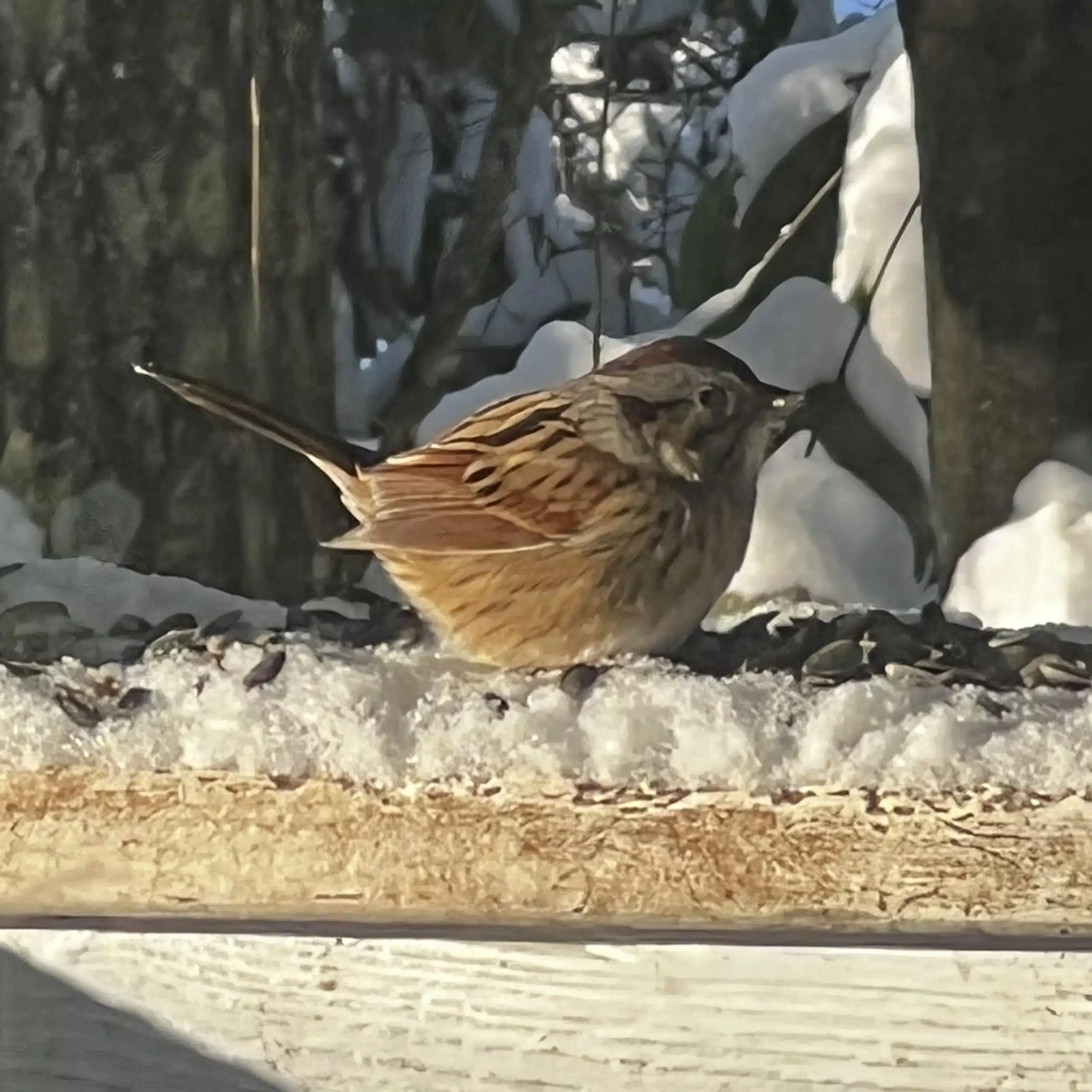From the comfort of our warm homes, it is easy to worry about how our feathered friends can handle cold weather. When temperatures drop to freezing or below, as they did during the recent winter snowstorm along the Gulf Coast, it is easy to fear for these creatures. But fear not, as birds have several attributes and behaviors that have served them well, long before we began to worry about them.
Most reputable sources on this subject focus on two things that help birds survive the cold–the nature of their feathers and eating. Getting enough to eat fuels bird metabolism and feathers keeps them warm. In most birds there are the two layers of feathers. The outer feathers are those we see. These tough feathers gift birds with flight but also shield them from moisture because they are regularly oiled during preening. An underlying layer of fine downy feathers serve to trap heat and keep birds warm in winter. This layer may become thinner in summer. Woodpeckers are an exception. Having only tougher feathers apparently serve them better as they perch and actively peck on trees.
The key to feeding in winter is finding high energy foods, especially fatty fruits and seeds that native plants provide. Common shrubs like Yaupon Holly and Wax Myrtle offer these fat-rich fruits that many of our overwintering birds devour. A flock of Cedar Wax Wings will strip a holly tree or bush in minutes. Yellow-rumped Warblers are fond of Wax Myrtle berries. The timing of these fruits is no accident, as birds serve to spread them. The best way for us to support birds in winter is to plant or support these and other native plants that also harbor small insects that are also important foods.
But birds have a few other tricks to cope with winter. Many small birds that are most vulnerable because of their size can drop their body temps at night and enter a controlled hypothermic torpor, reducing the rate of metabolism and use of energy. Beyond that, many birds will cuddle by sitting tightly together on branches, in cavities, or brush piles to reduce heat loss. Natural of artificial shelters serve them well, including the old shoes I keep around for our Carolina Wrens. All you see on a cold winter night are butts and tail feathers.

And yet, birds do die in winter for any number of reasons, including the cold and not getting enough to eat. The old and young are most vulnerable, but this is part of the cycle of life. Apart from offering fat-rich foods, like Black-oiled Sunflower seeds and suet, the best way to support birds in winter is to plant native plants, especially winter fruiting species that birds depend on. Remember, nature has a better plan than anything we can think of.
Hope to see you in our great outdoors!




